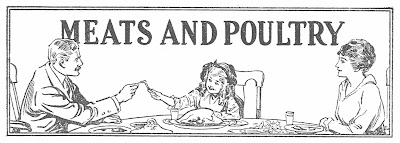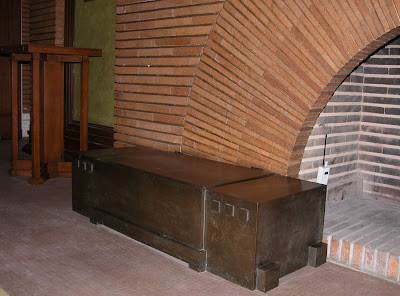As the calendar winds down (or speeds up?) to the end of the year, I thought it a good time to reflect on what has been an eventful time in the life of a Martin House curator. So here, in no particular order, are my Top Ten Curatorial Moments of 2010:
 10) Serving on a panel with Neil Levine, Scott Townsend, Mark Hertzberg and Tom Kubala at the Frank Lloyd Wright Building Conservancy conference in Cincinnati; it was an honor just to share the same podium with these fellow scholars, curators and architects...
10) Serving on a panel with Neil Levine, Scott Townsend, Mark Hertzberg and Tom Kubala at the Frank Lloyd Wright Building Conservancy conference in Cincinnati; it was an honor just to share the same podium with these fellow scholars, curators and architects...  9) Travelling to Philadelphia to meet former UB First Lady and Martin House resident Margy Meyerson, reconnecting with a living piece of Martin House history, and driving home with a trunk load of artifacts...
9) Travelling to Philadelphia to meet former UB First Lady and Martin House resident Margy Meyerson, reconnecting with a living piece of Martin House history, and driving home with a trunk load of artifacts...
8) Taking possession of the first-ever piece of horizontal art glass from the Martin House. Say it, Billy: this one was HUUUGE!
 7) Seeing the publication of the first book on the Martin Gardener's Cottage by Karen Tashjian, AIA. Karen - thanks for bringing a fresh perspective to a building we thought we knew...
7) Seeing the publication of the first book on the Martin Gardener's Cottage by Karen Tashjian, AIA. Karen - thanks for bringing a fresh perspective to a building we thought we knew... 6) Our very own episode of "Extreme Makeover: Martin House Website Edition." www.darwinmartinhouse.org
6) Our very own episode of "Extreme Makeover: Martin House Website Edition." www.darwinmartinhouse.org
5) Receiving a "Tree of Life" window from the Grey Art Gallery of NYU. Thanks to the Grey for redefining collegial...
 4) Giving a talk on the Martin House art glass for the "alumni college" of my Hamilton College 20th reunion in June. Yes, I'm older than I may look...
4) Giving a talk on the Martin House art glass for the "alumni college" of my Hamilton College 20th reunion in June. Yes, I'm older than I may look... 3) Receiving four additional Japanese prints, originally from the Martin House collection, from extended Martin family. Sorry about the blank spots on your walls, folks, but we can't thank you enough..
3) Receiving four additional Japanese prints, originally from the Martin House collection, from extended Martin family. Sorry about the blank spots on your walls, folks, but we can't thank you enough.. 
2) Hosting Fallingwater Director Lynda Waggoner, Heinz Architectural Center Curator Ray Ryan and Architect John Patkau for the first of our "Design Dialogues" in the Greatbatch Pavilion. A new kind of "cabin fever" set in...
 1) The commencement of Phase Five of Martin House restoration - in some respects, the most ambitious, challenging and intricate phase of work thus far. As Wright himself said, "the space within becomes the reality of the building." Welcome back to reality...
1) The commencement of Phase Five of Martin House restoration - in some respects, the most ambitious, challenging and intricate phase of work thus far. As Wright himself said, "the space within becomes the reality of the building." Welcome back to reality... If I were to add a number 11 to this list, it would have to be the cumulative experience of updating this blog every week. Thanks to all of you who take a few minutes each week to read these musings; it's truly a pleasure to provide them.
Best wishes to all for happy Holidays with family and friends. See you in 2011!





































